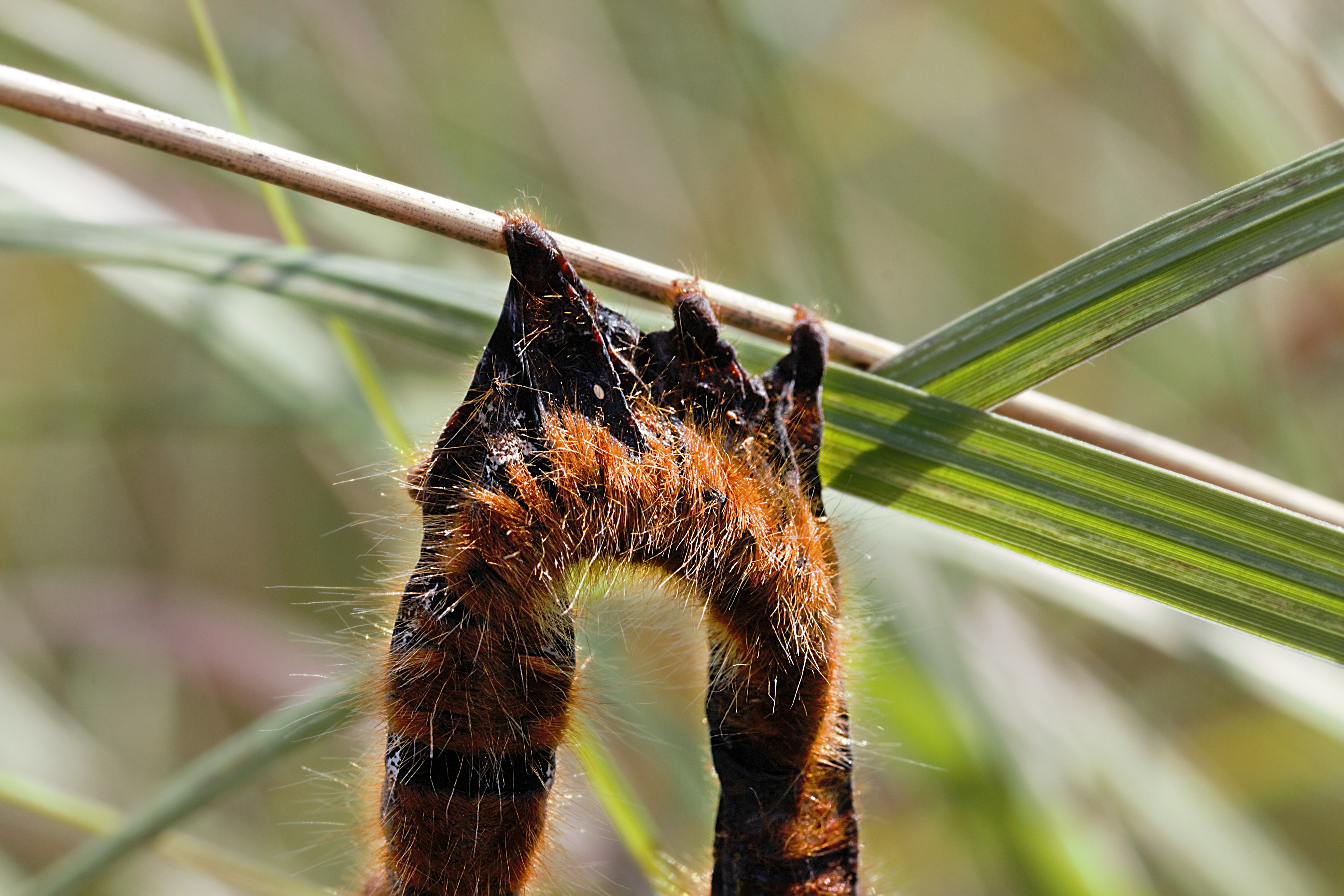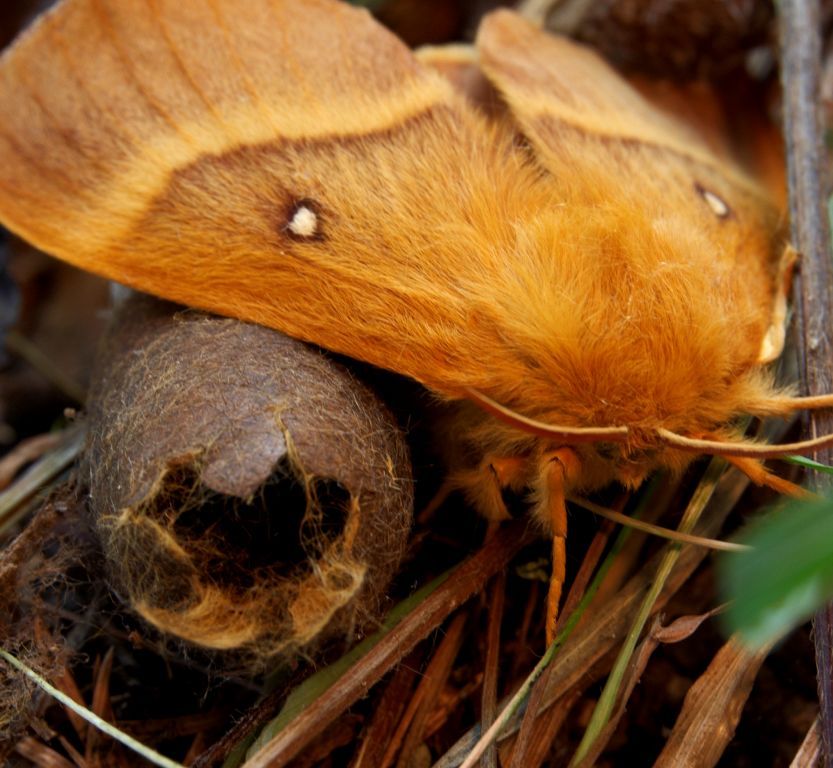Caterpillars Turned into Piles of Goop in England

A virus that causes its host, an ill-fated caterpillar, to climb to the top of a tree before being rendered into a pile of goop may have been spotted doing its slimy work in England last month.
On July 6, Chris Miller, manager at the Lancashire Wildlife Trust, found two oak eggar caterpillars affected by what may be a strain of the aforementioned virus, called baculovirus, in the Winmarleigh Moss Nature Reserve, 5 miles (8 kilometers) outside Garstang in northwest England.
While conducting a survey on the large heath butterfly, Miller spotted a caterpillar hanging from the top of a bush. This was strange, he said, because during the day, caterpillars usually stay in the undergrowth, where they're safe from the beaks of hungry birds. [The 9 Deadliest Viruses on Earth]

"The caterpillar was dead, and it was hanging from the branch by its middle legs, so it's kind of like an inverted U," Miller told Live Science. "The body was intact, but it had started to go a bit squidgy and squishy."
Miller found another caterpillar in the same state about 330 feet (100 meters) away. Another 160 feet (50 m) away, he found some pieces of caterpillar skin and hair, which he said are likely the remains of other oak eggar caterpillars also affected by baculovirus.
So why do caterpillars infected by baculovirus climb to the top of plants?
Hunger. A healthy caterpillar temporarily stops feeding when it molts (sheds its skin). This is not the case for bacilovirus-infected caterpillars, Kelli Hoover, entomologist at Pennsylvania State University, told NPR.
Sign up for the Live Science daily newsletter now
Get the world’s most fascinating discoveries delivered straight to your inbox.
"The gene that this virus expresses, which is called EGT, causes them to stay in a feeding state by inactivating the hormone that causes them to molt. … And in the presence of this gene, the molt is blocked, and so the insect, instead of stopping feeding for a long time, keeps feeding and is therefore found up in the tree in the middle of the day when you normally wouldn't find them," Hoover told NPR, explaining how the process works for gypsy moth caterpillars, a population that is regularly afflicted by baculovirus.
This climbing behavior helps the virus find a new host. When caterpillars' innards, chock-full of the virus, ooze down onto the vegetation underneath, the virus can take up residence in a new caterpillar that eats the affected leaves, Hoover told NPR.
Miller has ruled out other causes of the caterpillars' demise, including infection by parasitic wasps, bacterial infection and bird attacks. None of these other causes turn caterpillars to mush, as had happened to the ones Miller found.
Unfortunately, Miller said, the caterpillars he found can't be tested for baculovirus to confirm the cause of death, because they had deteriorated too much to make this possible.
Original article on Live Science.










